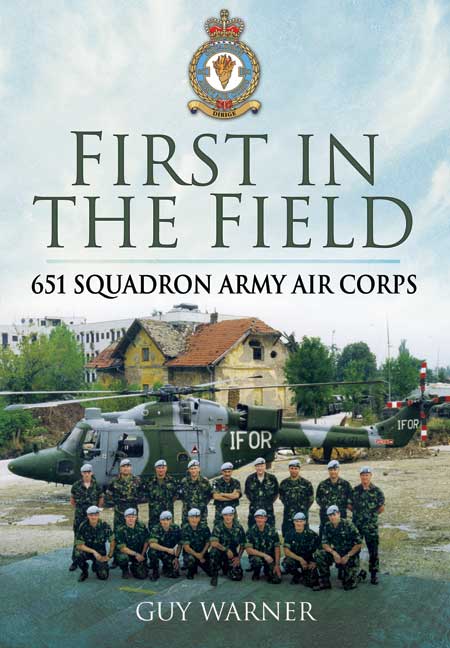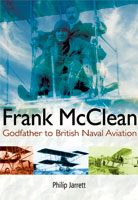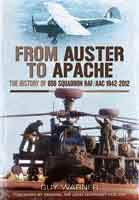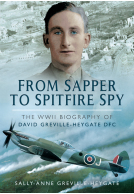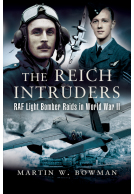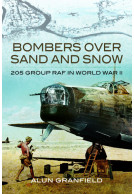First in the Field (Hardback)
651 Squadron Army Air Corps
(click here for international delivery rates)
Need a currency converter? Check XE.com for live rates
| Other formats available - Buy the Hardback and get the eBook for free! | Price |
|---|---|
| First in the Field eBook (8.0 MB) Add to Basket | £6.99 |
651 was the first Air Observation Post (AOP) Squadron, being formed at Old Sarum on August 1, 1941. It was still part of the RAF but all the pilots, drivers and signallers were from the Royal Artillery, while the RAF supplied the Adjutant, Engineer Officer and technicians. It is therefore the premier Army Air Corps squadron. Its first aircraft were an assortment of Taylorcraft Plus Cs and Ds, three Piper Cubs and a Stinson Voyager. Then later that year all 651's aircraft were replaced by the version of the Plus D manufactured by Taylorcraft in Britain and renamed the Auster I. These were deployed on active service in November 1942, to Algeria and then Tunisia, as part of Operation Torch. Its main duties were the direction of artillery fire, reconnaissance and light liaison. By May 1943 Tunisia was under Allied control and 651 moved to Sicily in support of offensive operations by 8th Army in August. Now equipped with Auster IIIs and flying by night and day, support was given to XIII Corps on the coast of the island, registering targets and directing counter-battery fire, including that of Royal Naval warships. On September 4, it became the first AOP unit to cross the Straits of Messina to participate in the invasion of Italy, again with 8th Army. In May 1944, the Squadron flew in support of 2nd Polish Corps during the capture of Monte Cassino, a major obstacle in the advance of Allied forces on Rome. Throughout the remainder of the war the Auster IVs and Vs of 651 Squadron worked with almost every division in Italy as they came in and out of the front line. Over the years that followed 651 Squadron served in Austria, Palestine on internal security duties and from where a landing was made on the aircraft carrier HMS Ocean in 1947, Eritrea protecting Italian civilians from Shifta bandits, Libya, Iraq during the Persian Oil Dispute, Egypt patrolling the Canal Zone and Cyprus, where in August 1953 HQ and 1910 Flights were the first AOP assets to deploy there. Further marks of Auster were introduced, AOP 6s, 9s and T.7srnIn 2000 it was selected as the Attack Helicopter Fielding Squadron to bring the Westland Apache AH.1 into service, in which role it served very successfully for the next three years at Middle Wallop. rnrnThen in 2004 it was all change again with a move to RAF Odiham to operate the Defender AL.1 in the ISTAR (Intelligence, Surveillance, Target Acquisition, and Reconnaissance) support role as part of the Joint Special Forces Aviation Wing. Since that time it has been continuously engaged in operations.
Lively and often amusing account of the Squadrons dedicated efforts in Peace and War.
Military Historical Society – Feb 2012
With 300 well-illustrated pages, this volume gives a good account of the varied activities of a neglected type of squadron.
Aeromilitaria - Winter 2011
Guy Warner doesn't just have the remarkable ability to put words on paper very quickly. In the aptly-titles 'First in the Field', he does so with what General Lord Dannatt GCB, CBE, MC, DL has described in an impressive Foreword as 'great finesse'. This story of the first Air Observation Post squadron is also a history of Army flying and battlefield aviation which goes back 200 years and is revealed in fascinating detail in seven chapters and similar number of appendices, backed up by a painstakingly compile, most useful 17-page index. Excellent. Highly Recommended.
Airmail - Sept 2011
A fine illustration of how the modern Army Air Corps began, drawing in the various elements of AOP Squadrons and Light Liaison Flights that had emerged from the Second World War and taken Great Britain through the post colonial period and Korea.
Hawkeye (Army Air Corps Association) - Sept 201
Very well written, informative, entertaining; and a most worthy record of a fine unit. Very, very well done!
Brigadier Michael Volkers, retired Army Air Corps Officer







